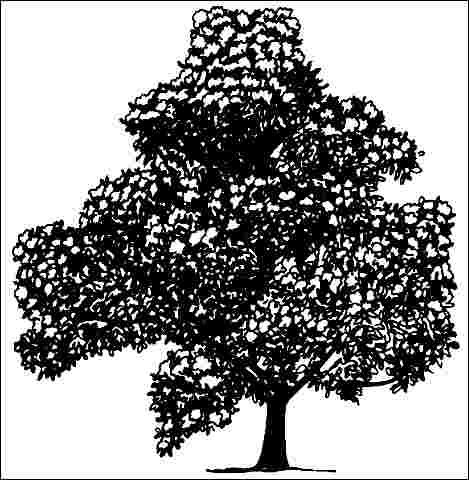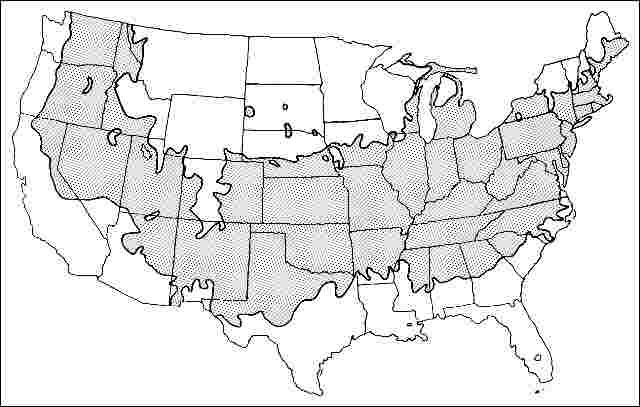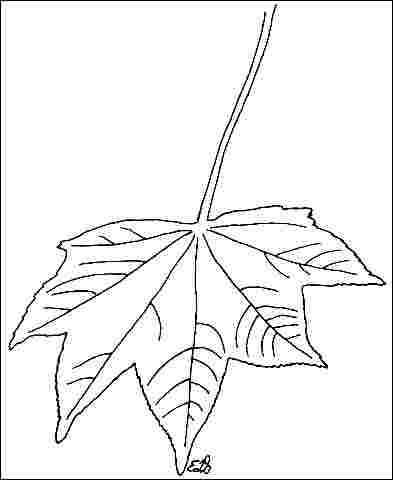Introduction
With massive, spreading branches and large, 7- to 12-inch-diameter, dark green, multi-lobed leaves, Castor-Aralia provides dense shade below its canopy and makes an ideal shade tree. Growing 40 to 50 feet high with an equal spread, Castor-Aralia is deciduous, the leaves turning a faint red in fall before dropping. While the young stems are armed with short, yellow prickles, the mature trunk is attractively ridged and blackened. The 1-inch-diameter, white flowers appear in dense, 12- to 24-inch-long terminal panicles and attract quite a few bees. This is not a problem on larger specimens since flowers are borne up in the tree away from the ground. The small black fruit which ripens in early fall is eagerly consumed by birds.

General Information
Scientific name: Kalopanax pictus
Pronunciation: kal-oh-PAN-acks PICK-tus
Common name(s): Castor-Aralia, prickly castor-oil tree
Family: Araliaceae
USDA hardiness zones: 5A through 7B (Fig. 2)
Origin: not native to North America
Invasive potential: invasive non-native
Uses: tree lawn > 6 ft wide; specimen; shade
Availability: not native to North America

Description
Height: 40 to 50 feet
Spread: 40 to 60 feet
Crown uniformity: irregular
Crown shape: round
Crown density: dense
Growth rate: moderate
Texture: coarse
Foliage
Leaf arrangement: alternate (Fig. 3)
Leaf type: simple
Leaf margin: lobed
Leaf shape: star-shaped
Leaf venation: palmate
Leaf type and persistence: deciduous
Leaf blade length: 8 to 12 inches
Leaf color: green
Fall color: yellow, red
Fall characteristic: not showy

Flower
Flower color: white/cream/gray
Flower characteristics: showy
Fruit
Fruit shape: round
Fruit length: less than .5 inch
Fruit covering: fleshy
Fruit color: black
Fruit characteristics: attracts squirrels/mammals; not showy; fruit/leaves not a litter problem
Trunk and Branches
Trunk/bark/branches: branches don't droop; showy; typically one trunk; no thorns
Pruning requirement: needed for strong structure
Breakage: resistant
Current year twig color: brown
Current year twig thickness: very thick
Wood specific gravity: unknown
Culture
Light requirement: full sun
Soil tolerances: clay; sand; loam; alkaline; acidic; well-drained
Drought tolerance: high
Aerosol salt tolerance: unknown
Other
Roots: not a problem
Winter interest: yes
Outstanding tree: yes
Ozone sensitivity: unknown
Verticillium wilt susceptibility: unknown
Pest resistance: free of serious pests and diseases
Use and Management
This tree could be planted more often in landscapes, but seeds germinate readily in the landscape. Use it with caution near open fields and wetlands. The large size and coarse texture probably make it best suited for large-scale landscapes, such as golf courses, parks, business complexes and campuses, but it could be tried along streets where there is plenty of soil space for root expansion.
Castor-Aralia should be grown in full sun on well-drained soil and will tolerate alkaline soil. While drought-tolerant once established, Castor-Aralia should receive ample moisture until then. Any pruning should be done in late spring, and Castor-Aralia is considered a long-lived tree.
Propagation is by seed.
Pests and Diseases
No pests or diseases are of major concern.